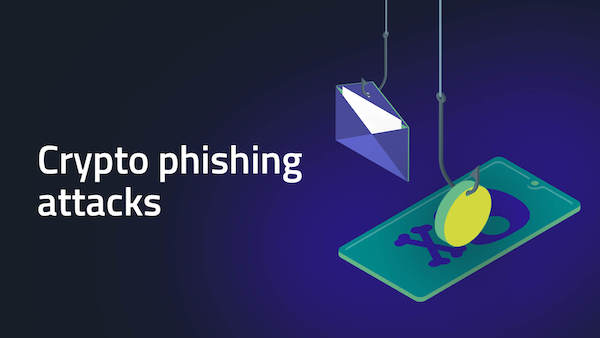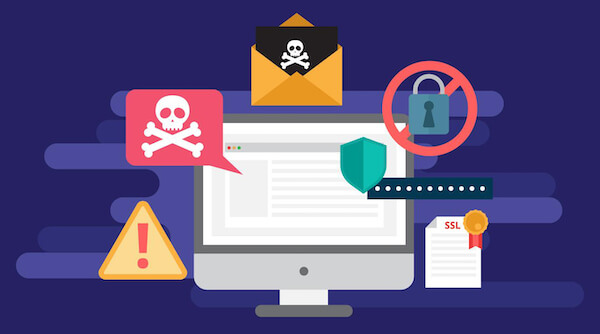Table of Contents
What is a Phishing Attack in Crypto?
Phishing is a form of cryptocurrency fraud that revolves around deceiving victims into divulging their private keys or personal information. The perpetrator usually poses as a genuine entity or individual to establish trust with the victim. Subsequently, after successfully deceiving the victim, the attacker leverages this information to pilfer their cryptocurrency holdings.

How does a phishing attack operate?
In a phishing attack, the lure frequently takes the form of a convincing email. Attackers invest considerable effort to make sure their emails look as authentic as they can. These emails typically guide the recipients to a website controlled by the attacker, where malware is deployed or user credentials are intercepted.
Common Phishing Attacks in the Cryptocurrency Space
Several types of phishing attacks are prevalent in the cryptocurrency sector:
Clone Phishing Attack
This attack occurs when the phisher crafts a replica of a genuine email that the target has previously received. The attacker then substitutes the original attachment or link with a malicious one and sends it to the victim. Because the email appears identical to a prior message received by the victim, they are more likely to click on the link out of habit or familiarity.
Spear Phishing Attack
Spear phishing is a targeted assault directed at a specific individual or organization. In this scenario, the attacker possesses prior knowledge about their target, which is used to customize the phishing email, making it appear authentic. For instance, the attacker might impersonate a person or organization well-known to the victim. Subsequently, a malicious link, disguised as a benign one, is included.
Pharming Attack
In this form of phishing attack, victims are redirected to counterfeit websites, even when they input the correct URL. Typically, this is achieved by infecting the DNS server, responsible for translating URLs into IP addresses, with malicious code. This code then diverts victims to the attacker's bogus website when they attempt to access a genuine one. Pharming attacks are particularly insidious because they can be challenging to detect. A victim might enter their bank's correct URL but still land on a fake website that closely resembles the genuine one.
Whaling Attack
A whaling attack is a specialized form of spear phishing that zeroes in on high-profile individuals within an organization, such as CEOs. This type of attack is exceptionally perilous due to its potential broader impact compared to a standard spear phishing attack. For instance, if a CEO falls victim and clicks on a malicious link, the attacker could potentially gain access to the entire company's network.

SMS Phishing Attack (Smishing)
SMS phishing, sometimes referred to as smishing, relies on text messages instead of emails. Smishing attackers send seemingly legitimate text messages from well-known companies to their victims. When a victim clicks on a link within the SMS, they are directed to enter their login credentials, which the attacker then uses to gain access to their account.
Voice Phishing Attack (Vishing)
Voice phishing, also known as vishing, employs voice calls or voicemails instead of emails. It usually occurs on voice-based platforms like voice-over IP or traditional residential phone services. In a voice phishing attack, the attacker spoofs their caller ID to make it appear as if they are calling from a reputable organization, such as a bank. Vishing fraudsters often use speech synthesis software to leave voicemails, warning potential victims about fraudulent activities in their bank or credit accounts.
DNS Hijacking
DNS hijacking involves redirecting victims to a fraudulent website by altering the DNS entries of a legitimate website. To execute this attack, a phisher substitutes the DNS entries, redirecting them to a different IP address. When users attempt to access the authentic website, they end up on the attacker's counterfeit site instead. This attack may also entail deploying malware, seizing control of routers, or tampering with DNS communications.
Phishing Bots
Phishing bots are computer programs that automate phishing attempts. They are capable of sending out mass phishing emails, fabricating bogus websites, and hosting these sites on servers. These bots can also autonomously gather victims' login credentials and other sensitive data. Typically, they are employed in conjunction with other attack methods, such as denial-of-service attacks and spamming.
Evil Twin Attack
An evil twin phishing attack targets public Wi-Fi networks. Attackers create a fraudulent Wi-Fi network with the same name as a legitimate one. When victims connect to this network, they are prompted to enter their login credentials, which the phishers can subsequently exploit to gain unauthorized access to their accounts.
Fake Browser Extensions
Fake browser extensions are deceptive plugins designed to mimic legitimate ones. They are frequently used to pilfer sensitive information like login details and credit card numbers. Furthermore, they can redirect victims to counterfeit websites, inject malware into their computers, or display unwanted advertisements. These malicious extensions are often disseminated through phishing emails or malicious websites and can be challenging to uninstall. Their primary goal is to extract private information like mnemonic phrases, private keys, and Keystore files.
Crypto-Malware Attack
A crypto-malware attack involves malware that encrypts the victim's files and demands a ransom for decryption. This type of malware can spread through phishing emails, malicious websites, or fake browser extensions. Once installed on the victim's computer, the malware encrypts their files and presents a ransom message on the screen, demanding payment for the decryption key.
Ice Phishing
In this form of phishing, the attacker sends the victim a counterfeit transaction that appears legitimate. The transaction typically requests the victim to sign it using their private key. In essence, the victim is deceived into signing a transaction that surrenders control of their tokens to the fraudster. If the victim proceeds, they unwittingly transfer ownership of their tokens to the attacker.
How to Avoid a Crypto Phishing Attack?
Here are some concise guidelines to help you steer clear of a crypto phishing attack:
-
Exercise caution with emails, especially if they contain attachments or links. When in doubt, reach out to the sender directly to verify their legitimacy.
-
Refrain from clicking on links or downloading attachments from untrusted sources.
-
Keep your operating system and software updated.
-
Utilize strong, unique passwords for each account, and avoid password reuse.
-
Enable two-factor authentication wherever possible.
-
Guard your personal information, such as wallet addresses or private keys, against sharing with anyone.
-
Opt for reputable cryptocurrency exchanges and wallets.
-
Exercise vigilance with websites that appear suspicious or too good to be true. When uncertain, conduct a web search to check if others have reported them as fraudulent.
-
Avoid downloading browser extensions from unreliable sources.
-
Enhance your online security by using a VPN, particularly when using public Wi-Fi networks.

Conclusion
In the thrilling world of cryptocurrencies, ensuring the safety of your investments is paramount. Phishing attacks pose a significant threat, exploiting the trust and excitement surrounding digital assets.
By understanding what is a Phishing Attack in Crypto, how these attacks work, recognizing common tactics, and implementing essential security measures, you can fortify your defenses and confidently navigate the crypto landscape. Remember, staying vigilant and informed is your best defense against the ever-evolving tactics of cybercriminals.
Please follow our U2U blog to stay updated with the latest information to protect your assets.






